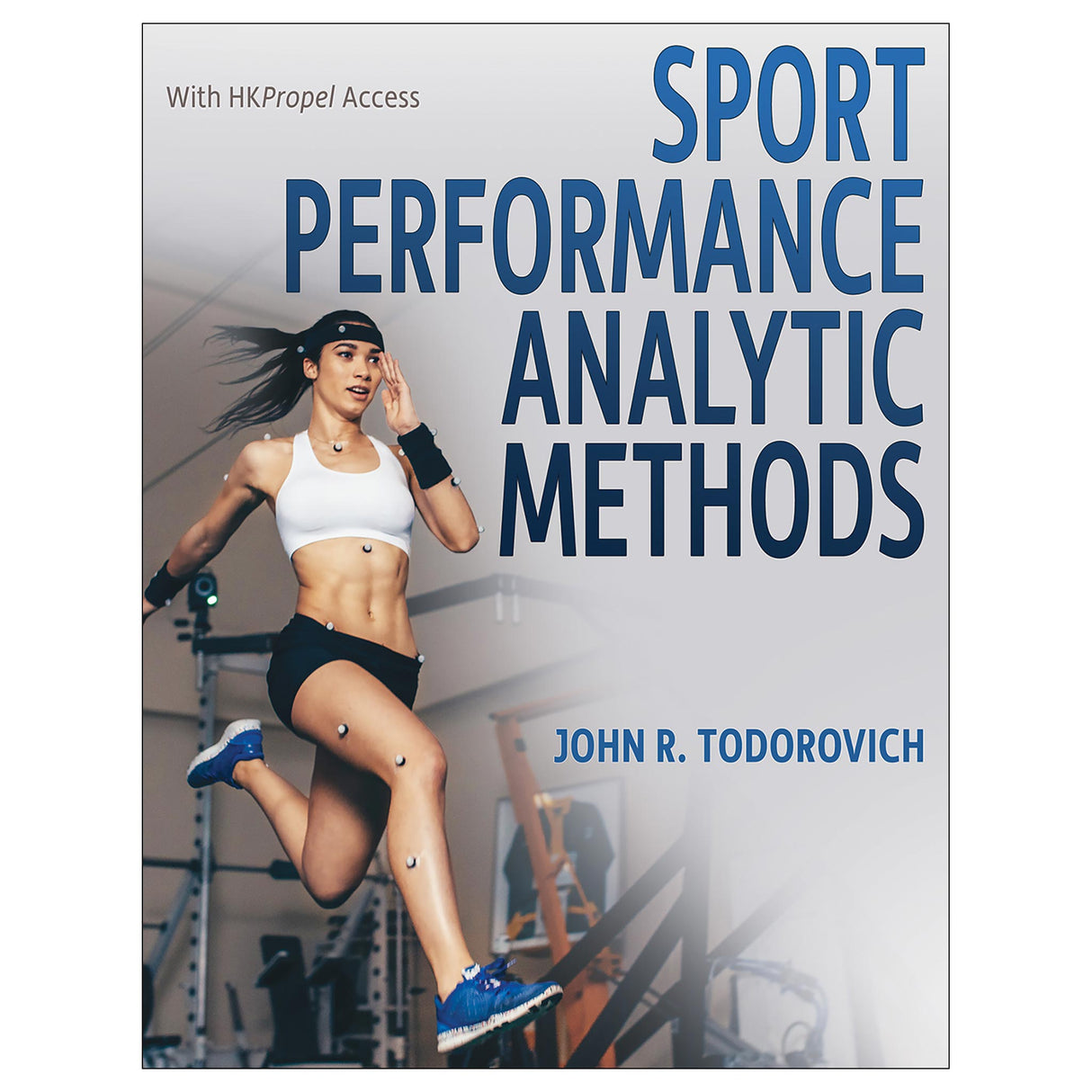Sport Performance Analytic Methods Ebook With HKPropel Access
Author: John R. Todorovich
$114.95 CAD

Sport Performance Analytic Methods With HKPropel Access not only introduces students to the field of sport performance analytics but also walks them through the entire SPA process. This unparalleled approach equips students to employ SPA tools and techniques to make informed decisions affecting organization performance and success.
The content of the book is driven by the SPA model, a seven-step process providing a guided pathway for conducting SPA analyses:
- Establish what you want to know
- Define the data you will collect
- Determine the data collection process and collect data
- Analyze the data
- Interpret the results
- Present the results
- Make data-based decisions
Students will then examine quantitative statistical concepts that can be used to analyze data and even help make predictions about future player or team performance. Key concepts include descriptive statistics, data sets, inferential statistics, group comparisons, and linear regressions.
The text also addresses techniques for collecting and analyzing qualitative data—including observation, content, narrative, discourse, thematic, and grounded theory analyses—ensuring that all forms of data are considered to produce successful outcomes.
Finally, the text demonstrates how to present SPA data in a format useful to apply in decision making. Students learn how coaches and performance data analysts use data to inform pre- and postcompetition strategic and tactical plans, make in-game decisions, evaluate team and individual performance, and make decisions for teams, players, and organizations.
Related online resources, delivered via HKPropel, provide students with hands-on learning tools. In addition to descriptions of the primary SPA software packages, included are nine learning modules that allow students to go through various statistical procedures step by step, checking results, and improving performance.
With Sport Performance Analytic Methods, students will gain a solid understanding of the principles made famous by Moneyball, and they will learn to use sport analytics to improve sport performance outcomes.
Note: A code for accessing HKPropel is included with this ebook.
Audience
Textbook for upper-undergraduate courses in sport performance analytics; reference for sport performance analytics practitioners.Historical Foundations of Sport Performance Analytics
Steps in the SPA Process
Scope of Sport Performance Analytics
Limitations of Sport Performance Analytics
Chapter 2. Understanding Data
Data Categories
Variables
Unit of Analysis
Depth of Data
Validity and Reliability of Data
Chapter 3. Data Collection
Measurement Tools
Collecting Qualitative Data
Instrument Quality
Process Approval
Organizing and Preparing Data
Data Entry
Chapter 4. Descriptive Statistics
Frequency Distributions
Normal Distribution
Measures of Central Tendency
Data Variation
Chapter 5. Inferential Statistics for Group Comparisons
Concepts of Hypothesis Testing
Parametric and Non-Parametric Statistics
Correlation Coefficient
t-Test
Analysis of Variance (ANOVA)
Multiple Analysis of Variance (MANOVA)
Analysis of Covariance (ANCOVA)
Chapter 6. Predictive Statistics
Simple Linear Regression
Multiple Linear Regression
Logistic Regression
Chapter 7. Qualitative Data Analysis
Framework and Systematic Observation Analysis
Content Analysis
Narrative Analysis
Discourse Analysis
Thematic Analysis
Grounded Theory
Chapter 8. Data Presentation
Data Reduction
Presentation Styles
Dynamic Data Presentation
Augmented and Static Data Presentation
Group and Individual Data Presentation
Chapter 9. Data-Based Decision Making
Technical Performance Decisions
Physiology-Based Decisions
Safety-Based Decisions
Strategic and Tactical Decisions
Dynamic Tactical Decisions
Prediction-Based Decisions
Organizational Strategic Data-Based Decisions
Make prediction-based decisions with sport performance analytics
Steps in the sport performance analytics (SPA) process
The scope of sport performance analytics
All ancillaries are free to adopting instructors through HKPropel.
Instructor guide. Includes a sample course syllabus, chapter objectives, lecture notes, assignments, and recommended responses to the end-of-chapter questions from the text.
Test package. Contains 270 questions in true-false, fill-in-the-blank, essay and short-answer, and multiple-choice formats. The files may be downloaded for integration with a learning management system or printed for use as paper-based tests. Instructors may also create their own customized quizzes or tests from the test bank questions to assign to students directly through HKPropel. Multiple-choice and true-false questions are automatically graded, and instructors can review student scores instructors in the platform.
Chapter quizzes. Contains ready-made quizzes (10 questions each) to assess student comprehension of the most important concepts in each chapter. Each quiz may be downloaded or assigned to students directly through HKPropel. The chapter assessments are automatically graded, and instructors can review student scores in the platform.
Presentation package. Features more than 150 PowerPoint slides of text, artwork, and tables from the book that can be used for class discussion and presentation. The slides in the presentation package can be used directly within PowerPoint or printed to make handouts for students. Instructors can easily add, modify, and rearrange the order of the slides.
Instructors also receive access to all student materials in HKPropel. For Sport Performance Analytic Methods, this includes key term flash cards, a review of data analysis software, and nine learning modules that provide in-depth learning of selected statistical procedures.





